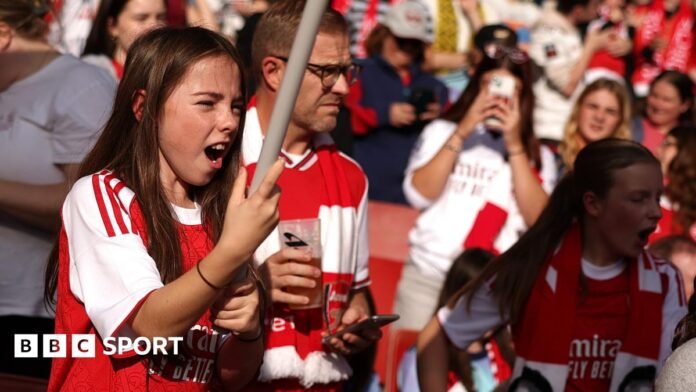Looking at the average attendances for the past four Women’s Super League (WSL) seasons, there was a clear jump following England’s Euro 2022 win and their run to the final of the 2023 World Cup, but figures fell slightly during the last campaign.
This season the league has averaged almost 6,500 fans per game. And, while it is important to note that the season is very much in its infancy with most teams having played only six games – and teams including Manchester City, Manchester United and Tottenham have yet to play at their larger, men’s stadiums – there has clearly not been the bounce experienced three years ago.
There have also been two rounds of WSL fixtures this season staged on weekends without Premier League games – compared to one round at this point last year – which is typically when the WSL will target bigger crowds.
Comparing the first six games of the season to this stage last year, the Women’s Sport Trust, external reported a fall of 1% in attendances.
But there are signs of success at some clubs.
Everton now play most of their home games at Goodison Park following the men moving to the Hill Dickinson Stadium.
Their two WSL matches at their new home have drawn crowds of 6,473 and 4,313 – a huge rise from the previous two seasons, when they averaged 2,000 at Walton Hall Park. Their first game at the Hill Dickinson against Manchester United attracted 18,154 fans.
Manchester United, meanwhile, had a crowd of 8,665 for their 0-0 draw with Arsenal this season – a club record for a WSL match at their Leigh Sports Village home.
There has been a more concerted push in women’s football for a dedicated fan base, to solidify the recent success and exposure into something longer term.
“It’s a really good strategy,” says Nicky Kemp, editorial director of marketing consultancy Creativebrief.
“If we use the men’s game as a blueprint, the women’s game will always lose. It will always be behind the curve if you compare transfer fees or how many people are in the stadiums.
“A lot of clubs have never had a strategy for filling stadiums, so they need to learn how to get fans in to experience games.
“It is not always linear. You have the post-2022 boost in player profiles, but the clubs who are capitalising are those who are ahead of the curve, like Arsenal putting the women’s games at the Emirates.”

